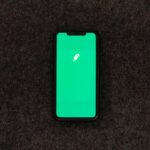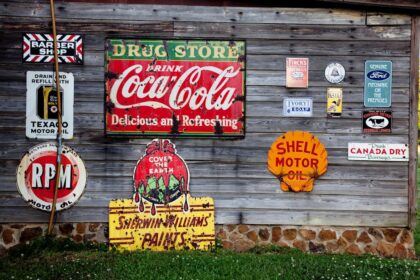Twitter, often perceived as a fleeting stream of public discourse, holds immense, largely untapped potential for Business-to-Business (B2B) lead generation and strategic market positioning. Unlike other social platforms that might prioritize personal connections or visual entertainment, Twitter functions uniquely as a real-time information network, a professional event hub, and a dynamic forum for industry dialogue. Its core strength lies in its ability to connect professionals directly with thought leaders, industry news, and competitive intelligence as it unfolds. For B2B companies, this translates into an unparalleled opportunity to engage with decision-makers, identify emerging trends, and position their solutions within relevant professional conversations. Many traditional B2B marketing channels, while effective in their own right, frequently miss the specific value proposition Twitter offers: the “water cooler” effect, where informal insights, rapid trend dissemination, and direct, albeit brief, interactions can significantly influence B2B purchasing decisions and perceptions.
Defining Your B2B Target Audience on Twitter for Effective Lead Generation
Successful B2B lead generation on Twitter begins with a granular understanding of your target audience. This extends beyond basic demographics to encompass their professional psychographics and Twitter-specific behavioral patterns.
-
Demographics and Firmographics: Pinpoint job titles (e.g., “VP of Marketing,” “Head of IT Infrastructure,” “Chief Financial Officer”), industries (e.g., SaaS, Manufacturing, Healthcare, FinTech), and company sizes (e.g., SMBs, Mid-Market, Enterprise). Twitter’s targeting capabilities allow for precise segmentation based on these criteria, ensuring your ads reach the individuals with purchasing power or significant influence within their organizations. Understanding the typical career progression paths within your target industries can also inform your targeting strategy, allowing you to reach future decision-makers at an earlier stage. Geographic targeting is also crucial for B2B companies with regional sales territories or those serving specific local markets.
-
Psychographics and Pain Points: Delve deeper into their professional interests, challenges, and goals. What problems are they trying to solve? What aspirations do they have for their careers or companies? What industry trends are they following or discussing? Are they interested in efficiency gains, cost reductions, revenue growth, compliance adherence, or innovation? Understanding these deeper motivations allows you to craft ad copy and content that directly addresses their specific needs and positions your solution as the definitive answer. This often requires thorough market research, competitive analysis, and direct conversations with existing clients to identify common pain points and priorities.
-
Behavioral Data on Twitter: Analyze how your target audience interacts with Twitter. What hashtags do they use or follow? Which industry influencers, competitors, or news outlets do they engage with? What types of content (articles, webinars, reports, discussions) do they share or comment on? This behavioral data is invaluable for developing “follower look-alike” audiences, keyword targeting strategies, and interest-based targeting. For instance, if your target audience frequently engages with #CloudSecurity or follows prominent cybersecurity analysts, these become actionable targeting parameters. Monitoring industry-specific events and conferences, identified by their hashtags, can also provide timely opportunities for ad placement.
-
Identifying Decision-Makers vs. Influencers: Recognize that in many B2B purchasing cycles, multiple stakeholders are involved. While your ultimate goal might be to reach the final decision-maker, influencers (e.g., department heads, project managers, technical specialists) often play a critical role in evaluating solutions and advocating for specific vendors. Your Twitter ad strategy should account for both, potentially using different ad creatives or content types for each group. For instance, technical whitepapers might appeal more to an influencer, while an ROI calculator might resonate more with a CFO.
Establishing Clear B2B Objectives for Twitter Ad Campaigns
Without well-defined objectives, your Twitter ad campaigns risk becoming aimless expenditures. B2B objectives on Twitter are typically aligned with stages of the sales funnel and require specific, measurable outcomes.
-
Lead Generation (MQLs, SQLs): This is often the primary goal for B2B marketers. Objectives might include generating Marketing Qualified Leads (MQLs) who have downloaded a specific piece of gated content (e.g., a whitepaper, e-book) or submitted a Lead Generation Card, or even Sales Qualified Leads (SQLs) who have requested a demo or consultation. Define the quantity and quality of leads you aim to achieve within a specific timeframe and budget. Track the conversion rates from impression to lead, and crucially, from lead to MQL/SQL.
-
Website Traffic and Content Downloads: For brands focused on content marketing and thought leadership, driving qualified traffic to specific landing pages, blog posts, industry reports, or resource hubs can be a key objective. The goal here is often to educate prospects, build authority, and nurture them further down the funnel. Metrics include click-through rates (CTR), bounce rates on landing pages, time on site, and number of content downloads. These are often precursors to direct lead generation.
-
Brand Awareness and Thought Leadership: While not directly revenue-generating, increasing brand visibility and establishing your company as a leading voice in your industry can significantly impact future sales. Objectives might include increasing impressions, reach, followers, mentions, or the share of voice within specific industry conversations. This is particularly relevant for new companies or those entering new markets. Using promoted trends or brand takeovers (though expensive) can achieve massive awareness rapidly.
-
Event Registrations and Demo Requests: For B2B companies hosting webinars, online workshops, industry conferences, or offering product demonstrations, driving registrations or direct demo requests is a tangible objective. This requires clear calls-to-action (CTAs) and seamless user experiences from the ad to the registration/demo form. Track the cost per registration/demo request and the subsequent attendance/conversion rates.
-
Account-Based Marketing (ABM) Support: Twitter Ads can be a powerful tool for supporting ABM strategies. Objectives might include increasing engagement from target accounts, delivering personalized messages to specific decision-makers within those accounts, or accelerating deal cycles. This often involves using “Tailored Audiences” based on CRM data or company lists to deliver highly relevant content to a select group of high-value prospects. Success here is measured not just by general lead volume but by engagement and progression within the defined target accounts.
Developing Compelling B2B Content for Twitter Ads
The success of your Twitter ad campaigns hinges on the quality and relevance of your creative content. For B2B, content must be inherently valuable, problem-solving, and professional.
-
Value Proposition Clarity: Every ad must clearly articulate what unique value your product or service offers. What specific problem does it solve for your B2B audience? How does it make their lives easier, their operations more efficient, or their revenue streams more robust? This value should be immediately apparent within the concise constraints of Twitter ad copy. Avoid jargon and focus on tangible benefits.
-
Problem-Solution Framing: Position your content around the challenges your target audience faces. For example, instead of saying “Our CRM is great,” say “Struggling with fragmented customer data? See how our CRM centralizes insights for smarter sales.” This approach immediately resonates by addressing a pain point before presenting your solution.
-
Data-Driven Insights, Whitepapers, Case Studies: These are the bread and butter of B2B content marketing. They provide in-depth information, demonstrate expertise, and build trust. Use Twitter ads to promote gated content like comprehensive whitepapers on industry trends, e-books offering practical solutions, or case studies showcasing quantifiable success stories from similar businesses. Promote snippets or key findings to entice clicks.
-
Webinars and Industry Reports: Live or on-demand webinars offer interactive learning opportunities, while comprehensive industry reports position your company as a thought leader. Twitter is an excellent channel for promoting registration for these events, often leveraging Lead Generation Cards for seamless sign-ups. Highlight the key takeaways or expert speakers to drive interest.
-
Testimonials and Success Stories: Social proof is incredibly powerful in B2B. Short video testimonials or image-based quotes from satisfied clients can build credibility and demonstrate the real-world impact of your solution. Focus on quantifiable results where possible (e.g., “Reduced operational costs by 30%”).
-
Video Content’s Role in B2B Engagement: Video is increasingly vital for B2B. Use it for explainer videos that simplify complex solutions, product demos showcasing key features, or client interviews sharing their experiences. Twitter’s autoplay feature can capture attention quickly. Keep B2B videos concise, impactful, and designed to convey a clear message even without sound (with captions). A 30-60 second video explaining a core value proposition or demonstrating a key feature can be far more engaging than static text.
-
Infographics and Data Visualizations: B2B audiences appreciate data presented clearly and concisely. Infographics can distill complex information, statistics, or processes into easily digestible visuals. These are highly shareable and can drive significant engagement when promoted through Twitter Ads.
Landing Page Optimization for B2B Conversions
The ad itself is only the first step. A poorly optimized landing page will waste ad spend and deter conversions. For B2B, landing pages must be professional, focused, and trustworthy.
-
Alignment with Ad Creative: The landing page must be a seamless continuation of the ad. The headline, imagery, and core message on the landing page should directly mirror or extend the promise made in the Twitter ad. Discrepancies create confusion and reduce trust, leading to high bounce rates.
-
Clear Calls to Action (CTAs): The primary goal of the landing page should be immediately obvious. Whether it’s “Download the Whitepaper,” “Request a Demo,” “Register Now,” or “Get a Free Trial,” the CTA button should be prominent, clear, and action-oriented. Use contrasting colors to make it stand out.
-
Minimizing Friction and Trust Signals:
- Form Simplicity: For B2B lead generation, only ask for essential information. Longer forms typically lead to lower conversion rates. Name, company email, and company name are often sufficient for initial qualification. Consider using progressive profiling for subsequent interactions.
- Trust Badges/Security Seals: Displaying security badges (e.g., SSL certificates, GDPR compliance), client logos, awards, or positive review snippets (e.g., G2, Capterra ratings) builds trust and credibility.
- Privacy Policy Link: Always include a link to your privacy policy near any data collection form to reassure users about how their information will be used.
- Concise Copy: Get to the point. B2B professionals are busy. Use bullet points, clear headings, and white space to make the page easy to scan. Highlight key benefits and unique selling points (USPs) succinctly.
-
Mobile Responsiveness: A significant portion of Twitter usage occurs on mobile devices. Your landing pages must be fully responsive, loading quickly and displaying correctly on all screen sizes, ensuring a consistent user experience regardless of the device. Slow loading times or broken layouts will immediately deter prospects.
Diving Deep into Twitter Ad Formats for B2B
Twitter offers a versatile suite of ad formats, each suited to different B2B objectives and stages of the buyer journey. Understanding their strengths is key.
-
Promoted Tweets: These are the most versatile and commonly used ad format. They appear organically in users’ timelines, looking like regular tweets but with a “Promoted” label.
- Versatility: Can be used for nearly any objective: driving website traffic, increasing awareness, generating leads (when paired with Lead Generation Cards or links to landing pages), or encouraging engagement.
- Crafting Effective Ad Copy: Keep it concise, value-driven, and benefit-oriented. Leverage Twitter’s character limit effectively. Use a strong hook, introduce the problem, offer your solution, and provide a clear CTA. For example: “Struggling with data silos? Our new platform unifies all your customer insights. Learn more: [Link] #DataDrivenB2B”
- Utilizing Rich Media: Always include an image, GIF, or short video. Visuals significantly increase engagement. For B2B, use professional imagery that reflects your brand, or data visualizations that convey key insights. Short, silent-first videos (with captions) are highly effective.
- Direct Lead Generation: While Promoted Tweets primarily drive traffic, they can be highly effective for lead generation when the link directs to a well-optimized landing page with a conversion form.
-
Promoted Video: Video content allows for more complex storytelling and demonstration, which is critical for many B2B solutions.
- Storytelling for Complex Solutions: Use video to explain intricate products, showcase software in action, or walk through a service offering. A 60-90 second explainer video can condense information that would take paragraphs of text to convey.
- Product Demos and Client Testimonials: Highlight specific features of your B2B SaaS, or share compelling client success stories directly from their mouths. Authenticity and real-world application resonate strongly.
- Measuring Success: Track video views (percentage watched, completion rates), engagement (likes, retweets, replies), and click-through rates to your website. High completion rates indicate your content is engaging and relevant.
-
Lead Generation Cards: Arguably the most direct and efficient B2B lead capture tool on Twitter.
- How They Work: These ads feature a prominent image, a brief call-to-action, and crucially, a button that, when clicked, automatically captures the user’s name, email address, and Twitter handle (pre-filled from their Twitter profile) without them ever leaving the Twitter app. This dramatically reduces friction.
- Best Practices:
- Compelling Image: Use a high-quality, relevant image that visually represents the offer (e.g., a professional photo of your whitepaper cover, a screenshot of your webinar speaker).
- Clear Value Proposition in Copy: Explain what the user will gain by submitting their information. “Download our latest industry report to unlock 5 key strategies for Q4 growth.”
- Specific Call-to-Action: “Download Now,” “Get Your Ebook,” “Register for Webinar.”
- Minimal Form Fields (Pre-filled): While Twitter handles the pre-fill, ensure you’re only asking for what’s essential if you add custom fields.
- CRM/Marketing Automation Integration: Twitter offers integrations (or allows for CSV export) to seamlessly push leads directly into your CRM or marketing automation platform, enabling immediate follow-up and nurturing. This is crucial for capitalizing on the high-intent nature of these leads.
-
Website Cards: Designed to drive qualified traffic to specific B2B landing pages or website sections.
- Combining Visuals with CTAs: These cards feature a prominent image or video, a headline, and a clear call-to-action button that links directly to your website.
- Ideal for: Promoting blog posts, case studies, product pages, solution pages, or event registration pages. The visual and descriptive text works together to entice clicks.
- Example: A Website Card promoting a new B2B product feature might show a compelling screenshot, a headline like “Boost Your Team’s Productivity with X Feature,” and a CTA button “Learn More.”
-
App Cards (Specific for B2B SaaS with Mobile Apps): While less common for traditional B2B services, App Cards are highly relevant for B2B SaaS companies offering mobile applications (e.g., project management apps, CRM apps, collaboration tools).
- Promoting B2B Mobile Applications: Drive installs or engagement with your B2B mobile app directly from the Twitter feed.
- Features: Displays the app’s icon, rating, and a direct link to download from the App Store or Google Play.
-
Twitter Amplify: A unique format for brands to align with premium video content from publishers and content creators.
- Contextual Ad Placement: Your B2B ad (pre-roll or mid-roll) runs before or during video content that resonates with your target audience. For instance, a cybersecurity firm might advertise before a video from a tech news outlet covering data breaches.
- Brand Safety and Reach: Provides a brand-safe environment and access to high-quality, professionally produced content, allowing your brand to reach a relevant, engaged audience within a premium context.
-
Dynamic Product Ads (DPAs): While typically associated with e-commerce, DPAs can be valuable for B2B companies with extensive product catalogs, equipment sales, or distinct service offerings.
- Retargeting with Personalized Ads: If a prospect visits specific product pages on your B2B website, DPAs can automatically show them those exact products (or related ones) in their Twitter feed.
- Personalization at Scale: Great for B2B companies selling hardware, specialized software licenses, training courses, or industrial components, offering a tailored ad experience based on browsing behavior.
-
Brand Takeovers/Trends (High-Impact for Large B2B Enterprises): These are premium, high-cost options designed for maximum brand awareness and reach.
- Dominating the Feed: A Brand Takeover allows your ad to be the first ad a user sees when they open Twitter. A Trend Takeover allows your brand to sponsor a trending topic for 24 hours.
- Massive Reach for Major Announcements: Ideal for significant B2B product launches, major company rebrands, or large industry event sponsorships where widespread, immediate visibility is paramount.
Advanced Twitter Ad Targeting Strategies for B2B
Twitter’s targeting capabilities are robust, allowing B2B marketers to reach highly specific professional audiences.
-
Audience Targeting Fundamentals:
- Demographics: Beyond age and gender (less critical for B2B), focus heavily on location. Target by country, region, state, city, or even specific zip codes for hyper-local B2B services.
- Keywords: Target users based on keywords they’ve recently searched for, used in their tweets, or engaged with. This is incredibly powerful for intent-based marketing. If users are discussing “AI for manufacturing” or “cloud migration challenges,” your ads addressing these topics will be highly relevant.
- Follower Look-alikes: Target users who share similar characteristics, interests, and behaviors with the followers of specific Twitter accounts. This is a goldmine for B2B: target followers of your competitors, industry analysts, trade publications, or thought leaders relevant to your niche. This allows you to tap into pre-qualified audiences.
- Interests: Select from a broad range of interest categories provided by Twitter, including specific professional categories like “Marketing,” “Technology,” “Finance,” “Healthcare,” “Engineering,” etc. Dig into sub-categories for more precision.
-
Tailored Audiences (The B2B Powerhouse): This is where Twitter Ads truly shine for B2B.
- Website Visitors (Remarketing): Create audiences of users who have visited specific pages on your website. Retarget prospects who viewed your pricing page, a particular product solution, or downloaded a piece of content but didn’t convert. Deliver follow-up messages or offers that address their specific interests.
- List Uploads (CRM Data): Upload hashed email lists of existing customers, prospects from your CRM, or, critically for ABM, specific target accounts.
- Exclusion: Exclude existing customers from lead generation campaigns to avoid wasted spend.
- Targeting: Deliver highly personalized ads to a specific list of high-value prospects or key decision-makers within target accounts. This is invaluable for ABM, allowing you to craft unique messages for each account or segment. For example, if you have a list of 50 target companies, you can ensure only employees from those companies see a specific ad for an executive briefing or a tailored solution.
- Mobile App Users: If you have a B2B app, target users who have installed, used, or performed specific actions within your app.
-
Advanced Features:
- Audience Insights: Use Twitter’s Audience Insights tool to delve into the demographics, interests, lifestyle, and buying behavior of your existing followers and potential ad audiences. This data can inform your content strategy, targeting choices, and even product development.
- Exclusion Targeting: Just as important as who you target is who you exclude. Prevent your ads from showing to irrelevant audiences (e.g., employees of your own company, existing clients for a new lead generation campaign, or audiences unlikely to convert). This ensures budget efficiency.
- Bid Strategies:
- Automatic Bid: Twitter optimizes bids to get you the most results for your budget. Good for beginners.
- Maximum Bid: You set a maximum amount you’re willing to pay per result. Offers more control.
- Target Cost: You set an average cost-per-result you’re aiming for, and Twitter optimizes to stay close to it.
- Optimizing for Conversions vs. Clicks: For B2B, always prioritize optimizing for conversions (e.g., leads, sign-ups) rather than just clicks or impressions. This trains Twitter’s algorithm to find users most likely to take your desired action, even if the cost per click is higher.
- Frequency Capping: Prevent ad fatigue. For B2B audiences, seeing the same ad too many times can be annoying and counterproductive. Set limits on how many times a user sees your ad within a given period (e.g., 2-3 times per week).
Campaign Management and Optimization for B2B Success
Effective management and continuous optimization are crucial for maximizing your return on investment (ROI) from Twitter Ads.
-
Setting Up Your Twitter Ads Account:
- Billing: Ensure your payment methods are correctly set up.
- Pixel Installation (Website Tag): This is paramount for B2B. Install the Twitter Website Tag (pixel) on all relevant pages of your website. This small piece of code enables conversion tracking (e.g., lead form submissions, demo requests, content downloads), remarketing to website visitors, and audience creation for tailored campaigns. Without it, you’re flying blind. Configure specific conversion events within the Twitter Ads platform.
-
Campaign Structure: Organize your campaigns logically for clarity and efficiency.
- By Objective: Create separate campaigns for “Lead Generation,” “Website Traffic,” “Brand Awareness,” etc.
- By Audience: Within each campaign, use different ad groups for distinct audience segments (e.g., “Competitor Followers,” “Website Visitors – Pricing Page,” “CRM List – High Value”). This allows for targeted messaging and budget allocation.
- By Ad Creative: Within ad groups, test multiple ad creatives (copy, images, videos) to identify what resonates best with each audience segment.
-
Budgeting and Bidding Strategies for B2B:
- Daily vs. Lifetime Budgets: Choose based on campaign duration and flexibility needs. Lifetime budgets are good for fixed-duration campaigns.
- Cost-per-click (CPC), Cost-per-lead (CPL), Cost-per-impression (CPM): Understand what each metric represents and choose the bidding strategy that aligns with your primary objective. For lead generation, focus on CPL.
- Optimizing Bids for Lead Quality: In B2B, a cheap lead is useless if it’s unqualified. Be prepared to pay a higher CPL for leads that truly match your Ideal Customer Profile (ICP) and have a higher likelihood of converting into an MQL/SQL. Monitor lead quality post-conversion.
-
A/B Testing for B2B Performance: Continuous testing is non-negotiable.
- Ad Copy Variations: Test different headlines, opening lines, problem statements, and benefit-driven messaging.
- Image/Video Variations: Experiment with different visuals, colors, and video lengths/styles.
- CTAs: Test different call-to-action phrases (“Download Now” vs. “Get Your Report,” “Request Demo” vs. “Schedule Call”).
- Landing Page Variations: Test different headlines, form lengths, trust signals, and overall page layouts to improve conversion rates.
- Audience Segments: Test different targeting combinations to see which segments respond best to your offers.
-
Monitoring Key B2B Metrics: Regular monitoring and analysis are critical for identifying what’s working and what’s not.
- Impressions, Reach, Frequency: For brand visibility and ensuring your message is being seen by enough unique users without excessive repetition.
- Click-Through Rate (CTR): Indicates how well your ad creative and copy resonate with your target audience. A high CTR suggests your ad is compelling.
- Conversion Rate (CVR): The percentage of clicks that result in a desired action (e.g., lead submission, download). This measures the effectiveness of your ad-to-landing-page funnel.
- Cost Per Lead (CPL): The direct cost of acquiring a single lead. Crucial for budget efficiency.
- Cost Per MQL/SQL: The ultimate measure of B2B ROI. This requires integrating Twitter ad data with your CRM to track leads through the sales funnel. This metric truly reflects the quality of leads generated.
- Engagement Rate: Likes, retweets, replies. Shows how well your content sparks interest and conversation.
- Video View Rate, Completion Rate: For video campaigns, indicates audience interest and retention.
- Attribution Modeling: Understand how Twitter Ads contribute to the overall B2B customer journey. Are they the first touch, a middle touch, or the last click? Use multi-touch attribution models to get a holistic view of Twitter’s impact alongside other channels.
-
Iterative Optimization: Use the data you gather to make continuous improvements.
- Pause Underperforming Ads/Audiences: Cut losses quickly on creatives or audience segments that aren’t delivering results.
- Scale Winning Combinations: Allocate more budget to campaigns, ad groups, or creatives that are performing exceptionally well.
- Ad Scheduling: Schedule your ads to run during peak activity times for your B2B audience. This might be during business hours, or perhaps evenings/weekends for certain professional groups.
- Geotargeting Refinements: If you notice better performance in specific regions, refine your targeting to focus more heavily on those areas.
Integrating Twitter Ads into Your B2B Marketing Funnel
Twitter Ads can effectively support prospects at every stage of the B2B buyer journey.
-
Awareness Stage (Top of Funnel): The goal here is to introduce your brand, establish thought leadership, and attract a broad but relevant B2B audience.
- Ad Formats: Promoted Tweets, Promoted Video.
- Content: Blog posts, industry reports, whitepapers, thought leadership articles, company culture videos, high-level explainer videos.
- Targeting: Broad industry interests, follower look-alikes of industry leaders or competitors, relevant keywords related to industry challenges.
- KPIs: Impressions, Reach, Engagement Rate, Click-Through Rate (to content).
-
Consideration Stage (Middle of Funnel): Prospects are now aware of their problem and researching potential solutions. Your goal is to provide valuable information that positions your offering as a viable option.
- Ad Formats: Lead Generation Cards, Website Cards, Promoted Tweets linking to gated content.
- Content: In-depth webinars, e-books, detailed solution guides, case studies, product feature overviews, comparative analysis.
- Targeting: Retargeting website visitors (who viewed awareness-stage content), users engaging with specific problem-solution keywords, audiences based on specific professional interests (e.g., “CRM Software,” “Cloud Security Solutions”).
- KPIs: Cost Per Lead (CPL), Lead Volume, Conversion Rate (from ad to lead).
-
Decision Stage (Bottom of Funnel): Prospects are evaluating specific vendors and are close to making a purchase decision. Your aim is to convert them into MQLs or SQLs.
- Ad Formats: Lead Generation Cards (for demo requests, free trials), Website Cards (for pricing pages, testimonials, consultation requests).
- Content: Free trial offers, personalized demo requests, pricing guides, compelling client testimonials, detailed ROI case studies, direct consultation offers.
- Targeting: Highly engaged website visitors (e.g., viewed pricing page, visited multiple product pages), CRM list uploads of specific high-value accounts (for ABM), users who have previously engaged with your middle-funnel content.
- KPIs: Cost Per MQL/SQL, Demo Request Rate, Trial Sign-up Rate, Pipeline Value Influenced.
-
Post-Conversion/Nurturing: While less direct advertising, Twitter can still play a role.
- Community Building: Use organic Twitter presence to foster a community around your product, offer customer support, and share user tips.
- Retargeting Existing Customers: For B2B companies with multiple products or tiered services, use remarketing to existing customers for upsell or cross-sell opportunities with relevant ad content.
Best Practices and Advanced Considerations for B2B on Twitter
Beyond the tactical execution, certain overarching principles and advanced strategies enhance B2B success on Twitter.
-
Leveraging Twitter Analytics: Don’t just rely on ad campaign data. Dive into the broader Twitter Analytics dashboard. Understand your organic audience demographics, interests, and how they engage with your content. This informs not just your ad targeting but also your overall organic content strategy, creating a synergistic effect. Identify peak engagement times for your audience.
-
Creative Best Practices for B2B:
- Professional, High-Quality Visuals: Stock photos can be used, but custom graphics, product screenshots, and professional video are more impactful. Maintain brand consistency.
- Clear, Concise, Benefit-Driven Copy: B2B audiences are busy. Get to the point quickly, highlight the primary benefit, and use strong action verbs. Avoid overly technical jargon unless specifically targeting a highly technical audience.
- Strong, Unambiguous CTAs: Make it crystal clear what you want the user to do.
- Testing Different Angles: Experiment with problem-solution, direct benefit, fear-of-missing-out (FOMO), or industry trend angles to see which resonates most.
-
The Power of Hashtags in B2B Twitter Ads:
- Research Relevant Industry Hashtags: Use tools to find hashtags your target audience follows and uses. Include a mix of broad industry hashtags (#SaaS, #CloudComputing) and niche-specific ones (#AIinManufacturing, #CybersecurityTips).
- Branded Hashtags: Create and use a consistent branded hashtag for your company or specific campaigns (e.g., #YourCompanySolutions).
- Event-Specific Hashtags: During industry conferences or webinars, leverage event hashtags to reach a highly engaged, relevant audience.
-
Compliance and Ad Policies for B2B:
- Twitter’s Advertising Guidelines: Familiarize yourself with Twitter’s ad policies to avoid disapprovals or account suspensions. Pay attention to rules around misleading content, prohibited products/services, and data collection.
- Data Privacy (GDPR, CCPA): Be mindful of data privacy regulations when collecting leads, especially via Lead Generation Cards. Ensure your privacy policy is clear and accessible, explaining how user data is handled and stored.
-
Twitter for Account-Based Marketing (ABM): Twitter Ads are exceptionally well-suited for ABM.
- Using Tailored Audiences with Company Lists: Upload lists of target company domains or employee emails to directly reach decision-makers within your target accounts.
- Hyper-Personalized Ad Content: Craft ad copy and creatives that speak directly to the specific challenges or opportunities relevant to that particular account or industry vertical within your ABM strategy.
- Aligning with Sales Outreach: Coordinate your Twitter ad campaigns with your sales team’s outreach efforts. An ad seen on Twitter can reinforce an email or LinkedIn message, increasing touchpoints and brand recognition.
-
Staying Current with Twitter Ad Platform Changes: The digital advertising landscape evolves rapidly.
- Algorithm Updates: Twitter’s algorithm constantly changes how content and ads are delivered. Stay informed about major updates.
- New Features: Twitter frequently rolls out new ad formats, targeting options, and reporting tools. Be proactive in testing and adopting these to maintain a competitive edge.
- Monitoring Industry News: Follow reputable digital marketing news sources and Twitter’s own business blog for updates.
-
Attribution and ROI Measurement in B2B:
- Multi-Touch Attribution Models: Recognize that B2B sales cycles are long and rarely involve a single touchpoint. Use multi-touch attribution (e.g., linear, time decay, U-shaped) to understand Twitter’s contribution across the entire customer journey, not just the last click.
- Calculating LTV (Lifetime Value): Ultimately, the true measure of B2B lead generation is the lifetime value of the customers acquired through Twitter. Track leads through the sales pipeline to understand their conversion rate to closed-won deals and calculate the average revenue generated over their lifetime.
- Demonstrating Business Impact: Clearly articulate the ROI of your Twitter ad spend to stakeholders, linking ad efforts directly to pipeline growth, MQL/SQL generation, and ultimately, revenue.
-
The Synergy of Organic and Paid Twitter Efforts:
- Amplifying Organic Content: Don’t limit your paid efforts to solely new ad creatives. Promote high-performing organic tweets, blog posts, or thought leadership content to extend their reach to a wider, targeted audience.
- Using Ad Insights to Inform Organic Strategy: Insights gained from paid campaigns (e.g., which headlines perform best, which audiences engage most, which content formats drive conversions) can be directly applied to improve your organic Twitter strategy.
- Building a Cohesive B2B Brand Presence: Ensure your paid ads align with your organic brand voice, messaging, and visual identity to create a consistent and trustworthy brand experience.
-
Beyond Leads: Building B2B Relationships: While lead generation is often the primary goal, remember Twitter’s fundamental nature as a communication platform.
- Twitter as a Listening Tool: Actively monitor conversations relevant to your industry, competitors, and target audience. Identify pain points, emerging trends, and opportunities for engagement.
- Engaging with Prospects Beyond Advertising: Respond to comments on your ads, participate in relevant industry discussions, and provide value organically. This builds goodwill and positions your company as an accessible, knowledgeable partner.
- Thought Leadership Through Consistent Content: Maintain a strong organic presence by regularly sharing valuable, insightful content. This reinforces your paid efforts by demonstrating ongoing expertise and commitment to your industry.
The power of Twitter Ads for B2B lies in its unique ability to reach professionals in a dynamic, real-time environment. By meticulously defining your audience, crafting compelling content, leveraging advanced targeting, and continuously optimizing your campaigns, B2B companies can transform Twitter from a casual social platform into a powerful engine for high-quality lead generation and strategic market influence. The directness of engagement, the specificity of targeting, and the sheer volume of professional discourse make Twitter an indispensable tool in the modern B2B marketing arsenal, driving not just leads, but meaningful, long-term business relationships.










